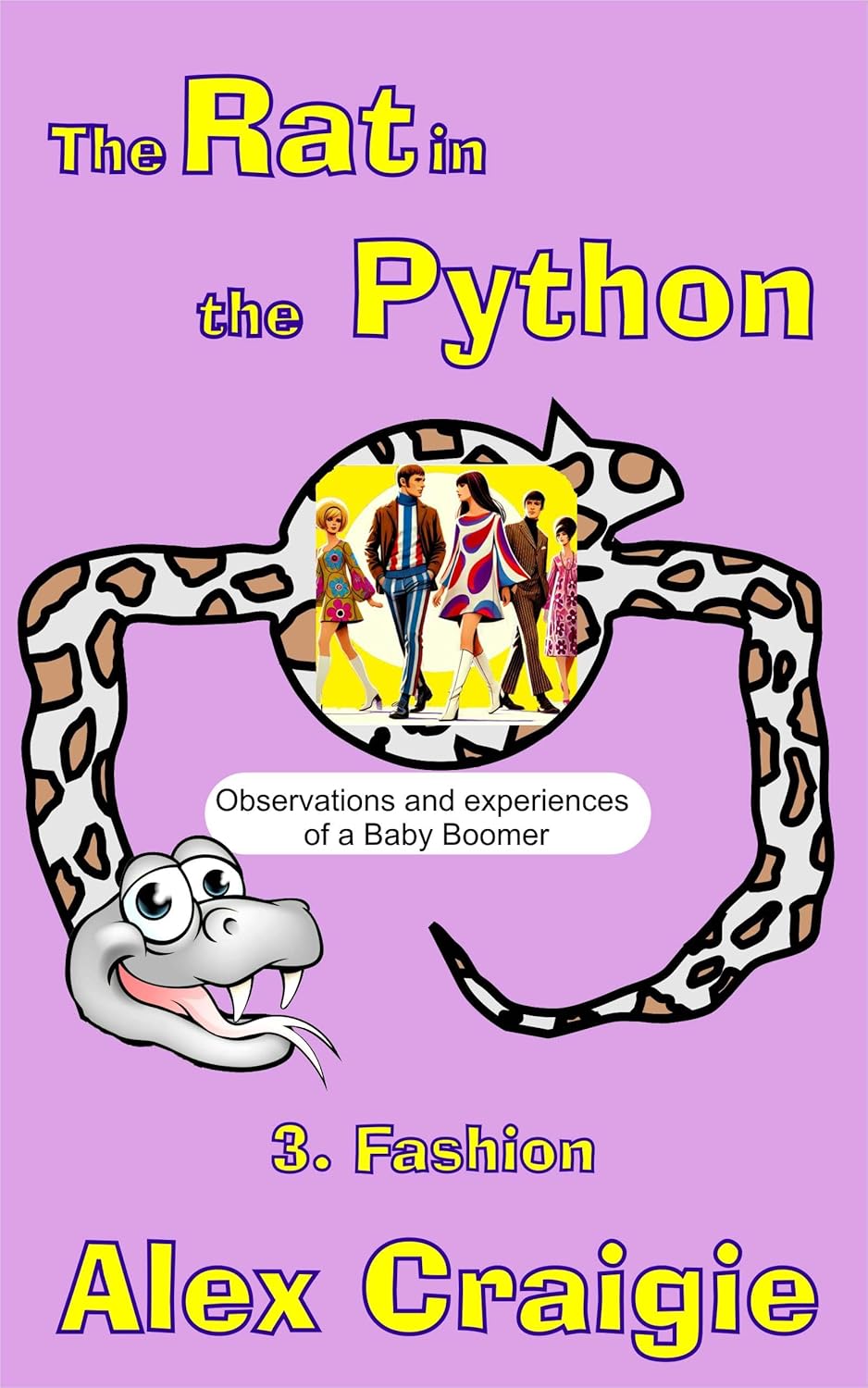What do you think?
Rate this book


176 pages, Paperback
Published October 28, 2024
The Rat in the Python: Book 3, Fashion is the third book in Alex Craigie’s series about growing up in Great Britain as a Baby Boomer in the 1950s and 1960s. I’ve read the first two books–The Home and Shopping and Food–and I’m fully committed to reading the entire series. Leisure and Pastimes is next. Should be fun!
The book’s approach to the subject of fashion is comprehensive and amply illustrated with advertisements and family photographs. Children’s, women’s, and men’s clothing for all occasions are included for each decade. Craigie also discusses the torturous foundation garments and footwear needed to be fashionable at the time, as well as hairstyles, makeup, jewellery, tattoos, and cosmetic surgery.
The book first points out that there is a big difference between clothing and its utilitarian uses (protection from the elements, maintaining modesty) and fashion. Fashion is an integral part of popular culture, including music, dance, and slang trends, with the undercurrent of capitalism bubbling along beneath it. What became apparent the more I read is that the fashion industry not only dictates what is fashionable, it also dictates the body shape needed to look good in the fashions of the moment. (Hence, the need for torturous foundation garments.)
Cragie highlights fashion’s role in asserting independence from one’s parents; maintaining or breaking away from gender roles; belonging to particular groups; making a statement about one’s own individuality; and proclaiming social status. Fashion also reflects social conditions, such as upturns and downturns of the national economy, wartime shortages, and political upheaval.
As with Books 1 and 2, I had a lot of fun seeing differences between the UK and the US (where I grew up as a Baby Boomer), primarily due to Great Britain’s need to rebuild its economy and infrastructure after World War II. One of several fashions I did recognize was the tippet, known in the US as a fur piece, which consisted of a dead animal with the head and paws still attached, which the lady draped around her neck to frighten away dogs and small children.
I also enjoyed Craigie’s trademark humorous prose style:
“Perhaps I’d threatened something along the lines of running away from home and joining a travelling circus (although I think if I had, I’d have been handed some sandwiches and cheerily waved off the premises).”
In addition to the fashions she grew up with as a Baby Boomer in the 1950s and 1960s, Craigie takes us into the 1970s, 1980s, and 2000s, including a sobering discussion of the environmental impact of the fashion industry’s role in our current disposable society and the planet’s future sustainability.
The Rat in the Python, Book 3: Fashion achieves a good balance of fun Baby Boomer nostalgia and currently relevant social commentary. I highly recommend it!